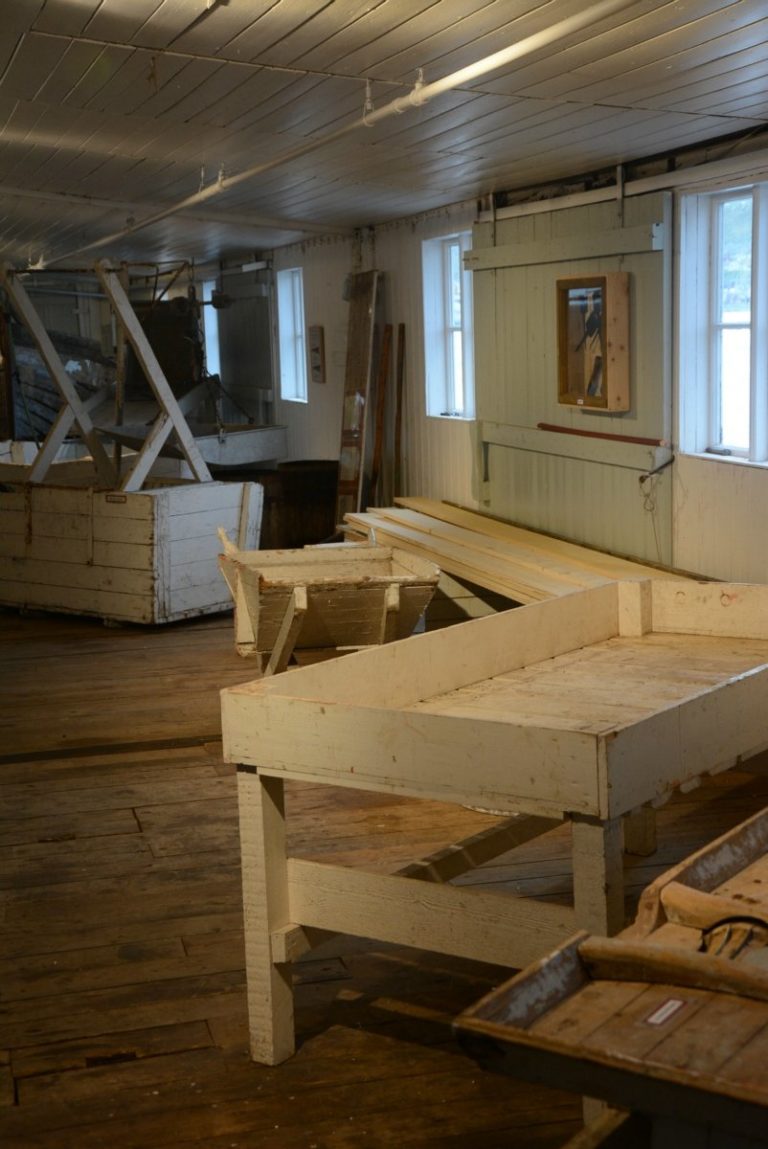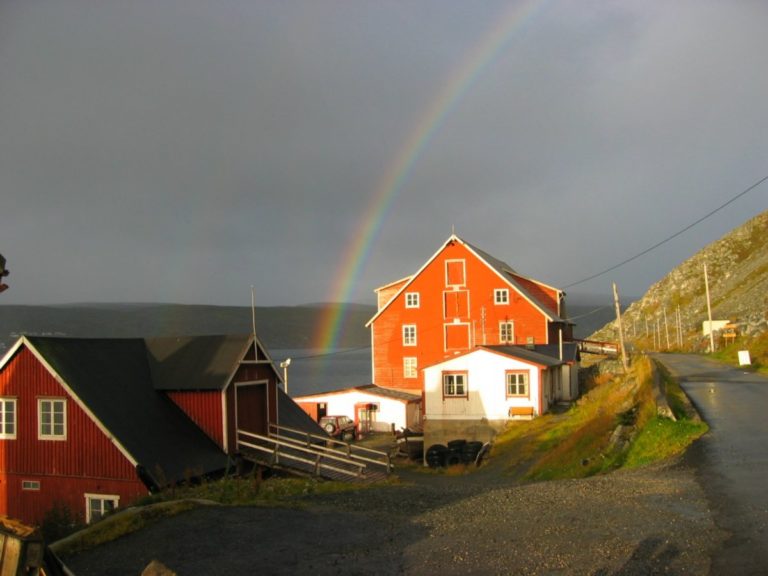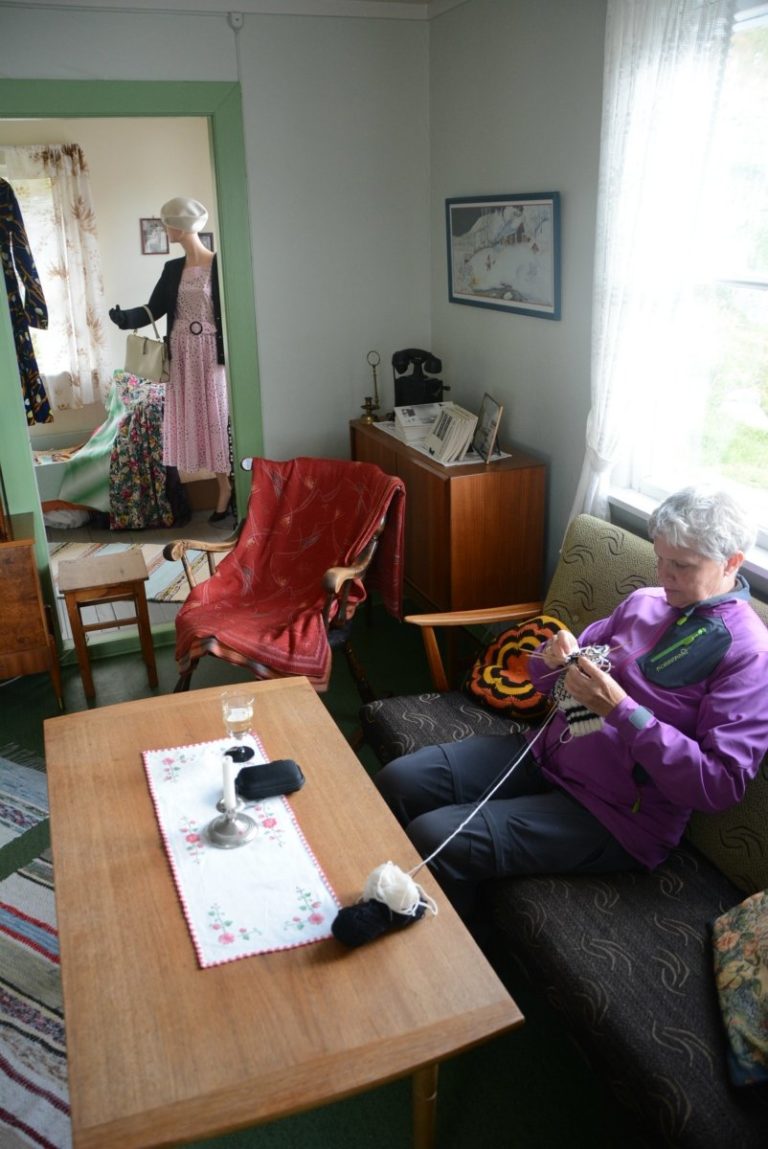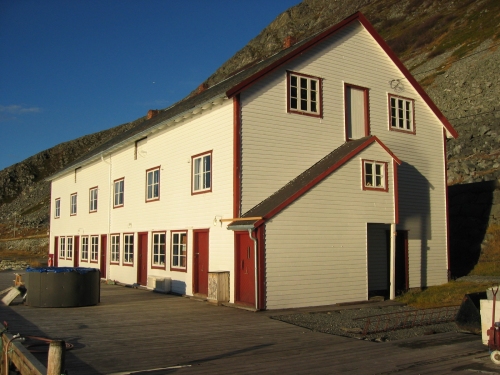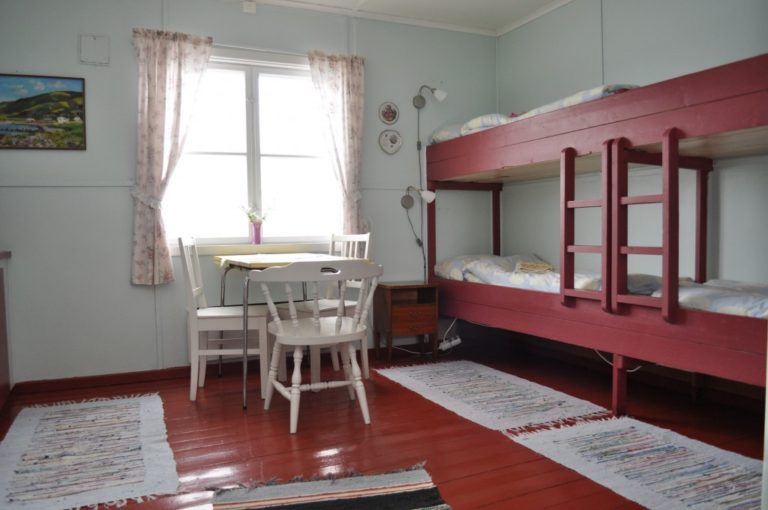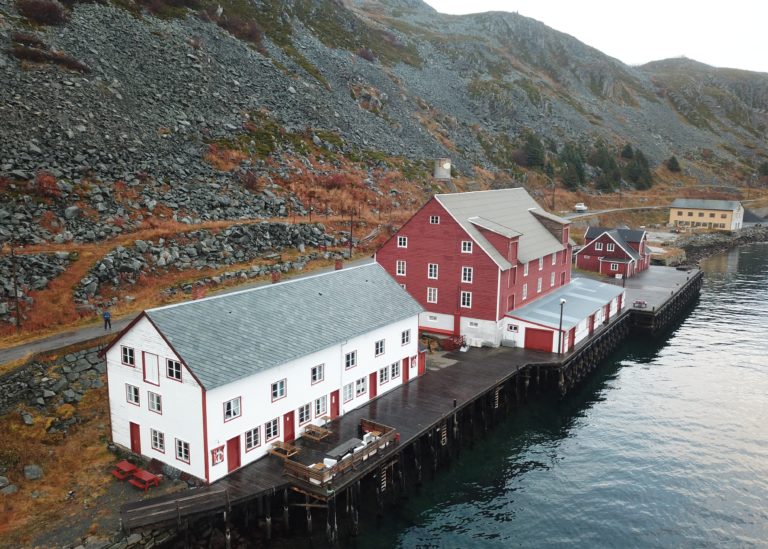Foldalbruket is a fish reception facility that was built in 1946–47, with a fish processing plant and accommodation for the manager and the workers. The plant belongs to the first generation of fish factories built after the Second World War and is largely faithful to the traditional architectural style along the coast. On the hill behind the buildings are the dried fish racks; dried fish was in fact the biggest source of income.
The manager lived comfortably
The manager enjoyed the highest standard of living, and his home is like a display of 1950s furnishings. With a radio cabinet, 1950s sofas with springing and armrests in walnut, bracket lamps with their elegant lines and ornaments on display, the interior inspires and stirs memories. The kitchen, with its slanting sliding doors and a large kitchen table by the window, is in the middle of the house, like a typical country kitchen.
Practical information on visiting Foldalbruket
Kjøllefjord is located on the NW section of the Nordkyn peninsula in the far north of Norway. There is no airport at Kjøllefjord, with the nearest being at Mehamn to the north east. Wideroe fly to Mehamn from many locations across Northern Norway, and from here you rent a car to make the journey. Simply take route 888 south from Mehamn, then route 894 to Kjøllefjord which is well signposted.
Summer and autumn are the best times to visit Kjøllefjord. During the winter storms can rage across the peninsula making driving near impossible. Sometimes the roads are closed due to the large amounts of snow that build up here.
Foldalbruket has its own website with all the information you will need. Meanwhile Visit Nordkyn have a great webpage with all the information you’ll need about visiting the peninsula.
From the office to the living quarters, all areas are open to the public
In the manager’s office, you can see calculator machines and order books dating from the period. At the back of the house is a room for the seasonal workers who came from the rural communities further up Kjøllefjord in order to work for the season. Here, nine workers slept in bunk beds and paid virtually nothing for their accommodation. A wood stove was used for both cooking and heating.
The Museum allows you to travel back through the flames into the past
The production plant has been preserved in its entirety. You can see where the fish was processed before it was hung up to dry on racks, and then sorted and exported. Implements and equipment used in the fish processing industry are on display. A fascinating feature is the model of Kjøllefjord as it was before the Second World War; red-painted wooden piers and white houses around the little 18th century church — everything fell victim to the flames in 1944. The bright colours of the houses of Kjøllefjord therefore appeared after the war. In the dry fish store, you get a quick introduction to the history of Finnmark: Sami culture, Norwegian settlement and how the Sami region was divided between Norway, Sweden, Finland and Russia.
The fishermen quarters can still be rented today
“Hyblene” (the rented rooms) were rooms at the plant that were hired out to fishing boat crews, primarily from the county of Troms, who stayed here while they were fishing. Fishermen numbers were highest here during the autumn, during the spring cod fishing season and during the summer. In the 1950s, the rooms were considered to be of a good standard and are still pleasant and colourful today. They can be rented and will give you access to a large 1950s kitchen and a complete retro-style living room from the past.
Nils Foldal was the founder of Foldalbruket
The founder of Foldalbruket was Nils Foldal, who began trading fish during the 1920s. In November 1944, the entire village of Kjøllefjord was burned to the ground and completely destroyed during the German withdrawal. In the spring of 1945, the owner Nils Foldal returned to the ruins of the abandoned Kjøllefjord, and in 1946–47, the company became a going concern again, boosted by strong demand from Western Europe, which was suffering from food shortages at the time.
Late 20th century decline has reversed in the last decades
While the factory flourished during the 1950s and 60s, the difficulties mounted during the 1970s. The final fish purchases were made in 1980, and in 1987 the remaining stocks of dry fish were transported to Nigeria. Foldalbruket subsequently stood empty, and during the 1990s many people wanted to demolish the buildings. However, the Kjøllefjord Kystlag coastal federation began a major restoration project to return the factory to its original condition. Thousands of hours have been put in by volunteers over a period of 15 years, giving Kjøllefjord an attraction, a unique hotel and an atmospheric culture centre.
Cultural events take place in Kjøllefjord all year round
The Kjøllefjord Kystlag coastal federation is also an important organiser of cultural events, and concerts and events are staged all year round. The most important of these events is the Chrisfestivalen in June, the name inspired by the former blues artist Kristen Lyngedal from Kjøllefjord.

